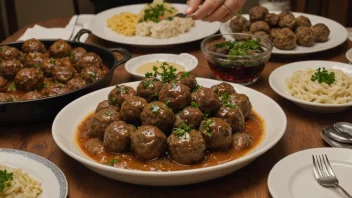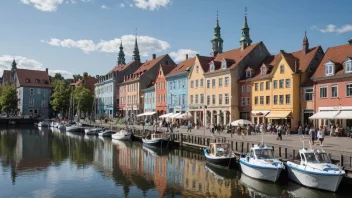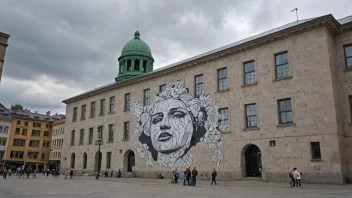Norwegian handicrafts are a testament to the rich cultural heritage of Norway, showcasing skills that have been passed down through generations. From intricate woodwork to beautiful textiles, each craft tells a story of the land and its people. This article explores some of the most fascinating aspects of traditional Norwegian handicrafts, highlighting the techniques, materials, and cultural significance behind them. Whether you’re a traveler seeking to immerse yourself in local culture or simply interested in learning more about these crafts, this guide will provide valuable insights into Norway's artisanal traditions.
1. The Art of Woodworking
Woodworking is one of the oldest crafts in Norway, shaped by the country's vast forests. Here are some key points about this enduring tradition:
- Materials: Norwegian craftsmen typically use locally sourced wood such as pine, spruce, and birch.
- Techniques: Traditional methods include carving, whittling, and turning, often resulting in functional items like utensils, furniture, and decorative pieces.
- Regional Variations: Different regions have their unique styles, such as the ornate carvings found in the region of Telemark.
2. Knitting and Textiles
Knitting is not just a pastime in Norway; it is a cherished craft that reflects the country’s history and climate. Here are some highlights:
- Patterns: Traditional Norwegian sweaters, known as “knitwear,” feature intricate patterns and are often designed to tell stories or represent local folklore.
- Materials: Wool from Norwegian sheep is favored for its warmth and durability, making it ideal for cold climates.
- Cultural Significance: Each region has its distinct styles and colors, often linked to local identities.
3. Ceramics and Pottery
Norwegian ceramics and pottery are known for their functional beauty. Here’s what you should know:
- Techniques: Traditional methods include hand-building and wheel-throwing, resulting in both decorative and everyday items.
- Designs: Many potters incorporate natural motifs and traditional symbols into their work, reflecting Norway’s stunning landscapes.
- Modern Influences: Contemporary Norwegian ceramists often blend traditional techniques with modern aesthetics, creating unique pieces for the current market.
4. Metalworking and Blacksmithing
Metalworking has a long-standing tradition in Norway, characterized by both artistry and functionality. Here are the key aspects:
- Tools and Techniques: Blacksmiths use age-old techniques to create tools, decorative items, and jewelry, often employing materials like iron and copper.
- Historical Context: Metalworking was vital for survival in historical Norway, with blacksmiths being essential in communities.
- Modern Revival: There is a growing interest in blacksmithing today, with workshops and courses available for those wishing to learn this craft.
5. The Role of Craft Markets
Craft markets play a significant role in promoting Norwegian handicrafts and supporting local artisans. Here are some insights:
- Locations: Markets are held in towns and cities throughout Norway, especially during festivals and holiday seasons.
- Community Support: These markets provide a platform for artisans to sell their work directly to consumers, fostering community connections.
- Experiential Learning: Many markets offer workshops where visitors can participate in crafting activities, gaining hands-on experience with traditional techniques.






